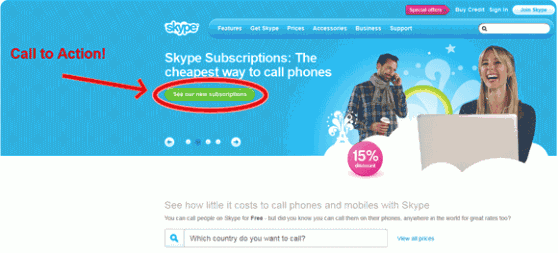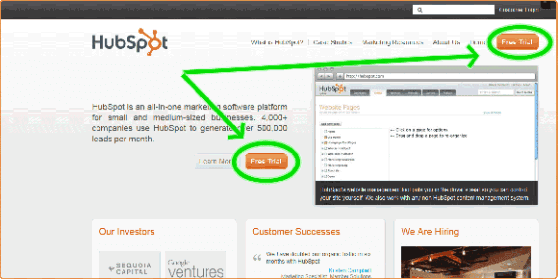Written by Guest Blogger Rob Edwards
You have the perfect product. In fact, you’ve been told by industry experts that your business could revolutionize the field. So, why is it that you aren’t getting results in terms of lead generation and revenue? It could be you just aren’t asking for it. Let’s discuss call to action (often referred to as CTA) techniques – your final pitch to potential clients.
Wait.. what’s a “Call to Action”?
What do we mean by “call to action”? Well, first ask yourself what direction you want potential customers to take when they see your print or web creative. Then ask what they will receive if they follow that direction. Maybe you want them to sign up for an offer for a new product or sign up for a newsletter. A call to action is a phrase that will encourage potential customers to advance their relationship with your company, a phrase that if worded correctly and utilized alongside high-impact design aesthetics can significantly increase your customer conversion ratio.
So, how do you create an effective call to action?
The Importance of Language
Most consumers are reactive not proactive. So creating a compelling call to action is imperative in generating interest in your company. When browsing a website or reading about a product in a magazine advertisement, customers won’t actively seek out ways to contact the company, they require concerted direction from you. Communicating the action you want potential customers to take requires the use of two elements: simplicityand urgency.
Active phrases such “sign up today” or “buy now” are common in advertising, because experts in web and creative design know that by keeping their message concise and adding an element of urgency with words such as “now” and “today”, they can build interest and encourage action from potential customers.
When asking a potential consumer to complete an action, it is imperative that you provide them with compelling motivation. Ensure a high conversion rate by adhering to one of the leading principles of web and creative design, and stating the key benefits of taking the action alongside your call to action.
For example, on Skype’s homepage they use the phrase “The cheapest way to call phones” alongside their call to action which states “See our subscriptions”. Of course, the words themselves aren’t the only factor to consider when creating a high-impact call to action.

if Skype is doing it, it must be cool!
Compelling Design Drives Results
Many studies have shown that if visitors cannot find what they want from a website within three seconds, they will leave the page. Ensure that visitors to your landing page see your call to action within those three seconds by making your copy standout. Increased call to action visibility can be achieved in a number of different ways from a web design perspective. One method is to make sure there is a large amount of whitespace around your call to action, as this will ensure your copy stands out, and visitors can quickly understand the benefits of the product and the action required of them.
Another web design trick employed in order draw attention to a call to action is using white space and contrasting color that guides the user towards the call to action copy.
Take a look at Hubspot’s site for example, and see how they’ve incorporated large amounts of white space with clear calls to action, gravitating the site visitor to the two “free trial” CTAs. Simple and effective, this uncomplicated design puts users at ease and guides them along the process without overwhelming them.

.. it works on us!
Conclusion and Review
So to wrap up here is a quick review of the four key factors to consider when creating a call to action:
1. Consumers are reactive not proactive. They need guidance in making a decision on your product.
2. Using active phrases can increase urgency and invite action on behalf of the consumer.
3. State the benefits alongside the call to action.
4. Highlight the call to action by utilizing white space and utilizing guiding arrows in the design.
Your product speaks for itself. Ensure you’re not shouting over it by following these proven call to action techniques. An entirely new market of customers is out there, simply waiting for to show them how to connect with your company.
